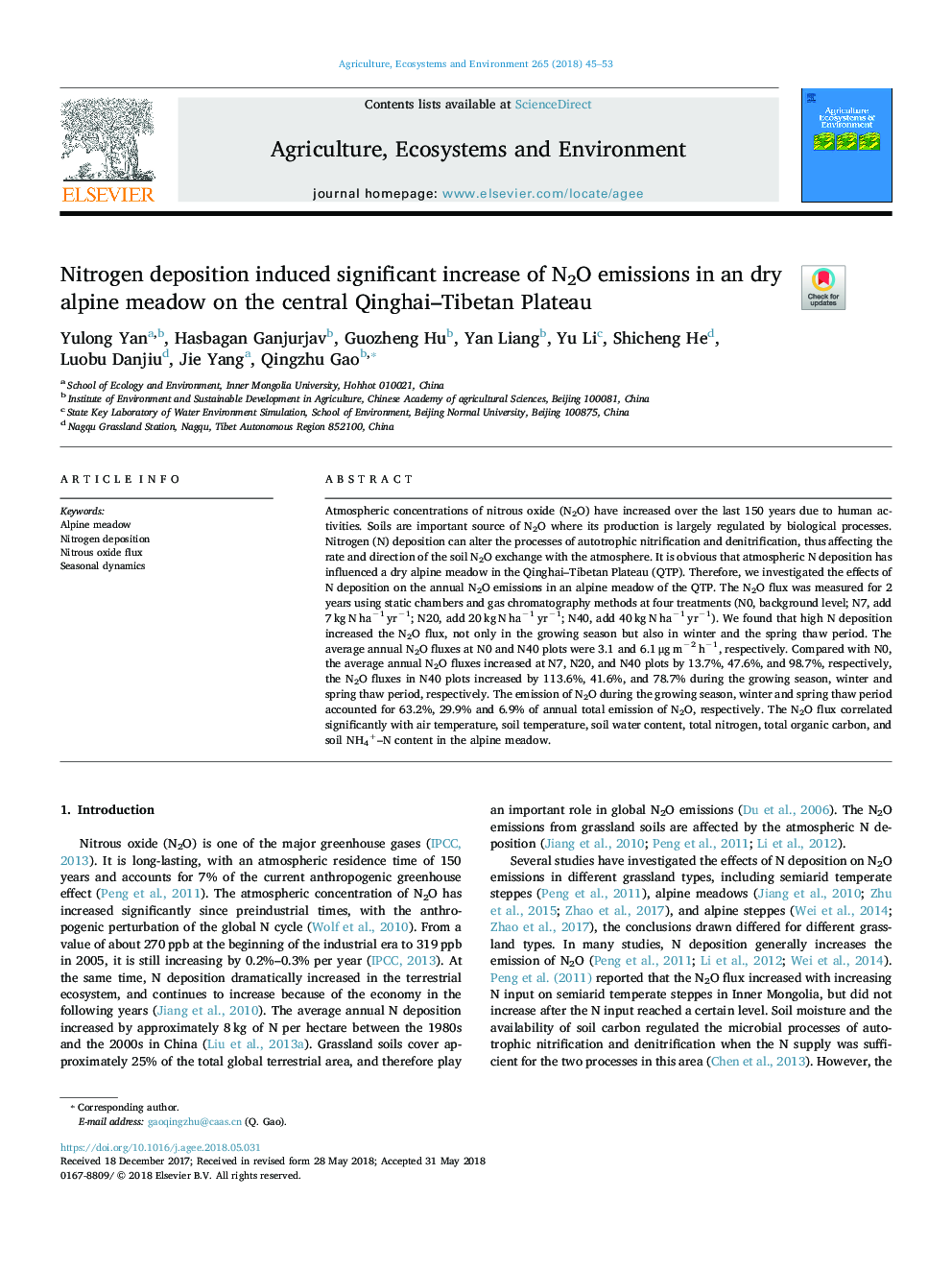| Article ID | Journal | Published Year | Pages | File Type |
|---|---|---|---|---|
| 8486961 | Agriculture, Ecosystems & Environment | 2018 | 9 Pages |
Abstract
Atmospheric concentrations of nitrous oxide (N2O) have increased over the last 150 years due to human activities. Soils are important source of N2O where its production is largely regulated by biological processes. Nitrogen (N) deposition can alter the processes of autotrophic nitrification and denitrification, thus affecting the rate and direction of the soil N2O exchange with the atmosphere. It is obvious that atmospheric N deposition has influenced a dry alpine meadow in the Qinghai-Tibetan Plateau (QTP). Therefore, we investigated the effects of N deposition on the annual N2O emissions in an alpine meadow of the QTP. The N2O flux was measured for 2 years using static chambers and gas chromatography methods at four treatments (N0, background level; N7, add 7â¯kgâ¯Nâ¯haâ1â¯yrâ1; N20, add 20â¯kgâ¯Nâ¯haâ1â¯yrâ1; N40, add 40â¯kgâ¯Nâ¯haâ1â¯yrâ1). We found that high N deposition increased the N2O flux, not only in the growing season but also in winter and the spring thaw period. The average annual N2O fluxes at N0 and N40 plots were 3.1 and 6.1â¯Î¼gâ¯mâ2â¯hâ1, respectively. Compared with N0, the average annual N2O fluxes increased at N7, N20, and N40 plots by 13.7%, 47.6%, and 98.7%, respectively, the N2O fluxes in N40 plots increased by 113.6%, 41.6%, and 78.7% during the growing season, winter and spring thaw period, respectively. The emission of N2O during the growing season, winter and spring thaw period accounted for 63.2%, 29.9% and 6.9% of annual total emission of N2O, respectively. The N2O flux correlated significantly with air temperature, soil temperature, soil water content, total nitrogen, total organic carbon, and soil NH4+-N content in the alpine meadow.
Related Topics
Life Sciences
Agricultural and Biological Sciences
Agronomy and Crop Science
Authors
Yulong Yan, Hasbagan Ganjurjav, Guozheng Hu, Yan Liang, Yu Li, Shicheng He, Luobu Danjiu, Jie Yang, Qingzhu Gao,
